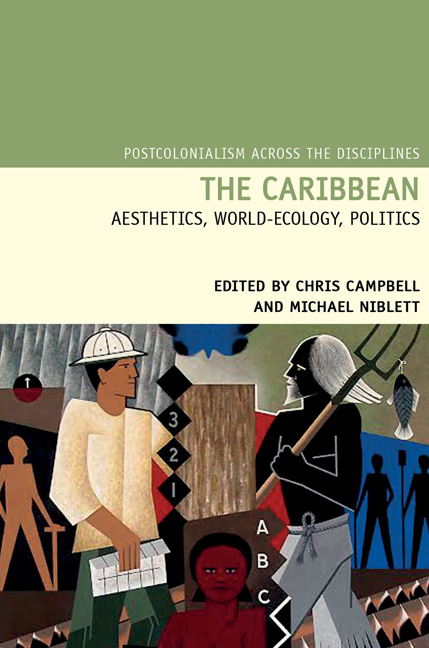Book contents
- Frontmatter
- Contents
- Acknowledgements
- Introduction: Critical Environments: World-Ecology, World Literature, and the Caribbean
- Prologue: The Brutalization of Truth
- Catastrophes and Commodity Frontiers
- Ecological Revolutions and the Nature of Knowledge
- Economies of Extraction: Restructuring and Resistance
- 7 Ecopoetics of Pleasure and Power in Oonya Kempadoo's Tide Running
- 8 Jamaica and the Beast: Negril and the Tourist Landscape
- 9 Ecology, Identity, and Colonialism in Martinique: The Discourse of an Environmental NGO (1980–2011)
- Epilogue: Tingaling
- Notes on Contributors
- Index
8 - Jamaica and the Beast: Negril and the Tourist Landscape
from Economies of Extraction: Restructuring and Resistance
- Frontmatter
- Contents
- Acknowledgements
- Introduction: Critical Environments: World-Ecology, World Literature, and the Caribbean
- Prologue: The Brutalization of Truth
- Catastrophes and Commodity Frontiers
- Ecological Revolutions and the Nature of Knowledge
- Economies of Extraction: Restructuring and Resistance
- 7 Ecopoetics of Pleasure and Power in Oonya Kempadoo's Tide Running
- 8 Jamaica and the Beast: Negril and the Tourist Landscape
- 9 Ecology, Identity, and Colonialism in Martinique: The Discourse of an Environmental NGO (1980–2011)
- Epilogue: Tingaling
- Notes on Contributors
- Index
Summary
Jamaica is often referred to as an island paradise […] Among its main attractions are its stunning natural beauty […]
– Litvin and Fyffe (2008, 161)I have never returned home without marvelling at the fundamental beauty of our island or at the horrible things we are doing to that beauty
– Priestley (1938).The island to which J. B. Priestley refers in the epigraph above is not the same one as that named by Litvin and Fyffe. Priestley continues, ‘Unless we realize at once what is happening and make up our minds to put an end to these horrors, beautiful England will soon be no more than a ghost haunting libraries and art galleries’. The celebrated novelist wrote those words in a message commending the publication of the book Britain and the Beast, a collection of essays by distinguished writers concerned about the spoliation of Britain's landscape. For decades, many writers have expressed similar concerns about Jamaica, partly because, like their British counterparts, they felt a genuine love for the landscape, and also because they recognized the value of a beautiful environment as an economic resource.
This chapter is a study of landscape beauty as a resource for the tourist industry (Hudson, 1986). Using a wide range of sources, it traces the development of one particular tourist resort area, Negril, in Jamaica, which has been promoted largely for its natural beauty and pristine tropical environment. It demonstrates how those qualities have been affected by the tourist industry and questions how far landscape is valued by promoters of tourism and even by the tourists themselves.
Jamaica's Tourism Landscape and the Media
Jamaica's reputation for landscape beauty is centuries old. As Barry Floyd observed:
The record of the first European sighting of Jamaica on 5 May 1494, would not seem out of place in a contemporary tourist brochure: ‘… there silhouetted against the evening sky, arose sheer and darkly green Xamayca. It is the fairest island that eyes have beheld: mountainous and the land seems to touch the sky; very large, bigger than Sicily, and full of valleys and fields and plains’. (Floyd, 1979, 25)
- Type
- Chapter
- Information
- The CaribbeanAesthetics, World-Ecology, Politics, pp. 161 - 173Publisher: Liverpool University PressPrint publication year: 2016



